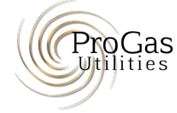Title Page
-
Site conducted
-
Conducted on
-
Prepared by
-
Location
-
Operative being assessed
Untitled Page
-
O = Observed K = Knowledge S = Simulation
Equipment checks
-
Ensures the BA is not defective and is not outside of its service due date
-
Ensures the air turbine has been PAT tested and is still in date
-
Checks the face mask and straps are intact, not damaged or deteriorated
-
Inspects rubber seals on face mask
-
Cleans, disinfects, and demists face mask using correct cleaning wipes
-
Checks the exhalation and inhalation valves on the mask are free from dirt and damage, and that they are connected to the facemask properly
-
Checks the mask breathing tube for obvious damage
-
Inspects the harness, belt and hose. Checks for spanner on the bottom of the Flowmaster blower
-
Inspects the hose for any damage or deterioration
-
Completes the BA inspection sheet
Donning process
-
Dons the BA in a safe area ensuring the wearer and their colleagues visually check the balaclava is correctly fitted
-
Positions air hose assembly over their head and fastens the belt around their waist, adjusting and tucking in any remaining belt excess
-
Loosens facemask hamess straps to their full extent
-
Places the facemask against their face by sliding it up to ensure their chin is securely placed in the chin cup. Ensures the operative/wearer is clean shaven at the point of contact with the mask
-
If multiple adjustable straps are fitted, the bottom and middle straps are adjusted progressively and evenly in pairs to ensure that the head harness is 'square' on the back of their head Finally adjusts the top strap
-
Correctly places flame retardant balaclava over their head so as there is complete protection of their head, face, eyes and neck against fire injury
Negative pressure test / Face seal test
-
-
Temporarily disconnects the turbine on the supply end of the air supply hoses and seals off with the <br>palm of their hand or similar
-
Slowly inhales to create a negative pressure inside the mask thus sucking the mask onto the face
-
Ensures the facemask remains firmly ‘sucked down’ onto the face by holding their breath for approx. <br>eight seconds. Repeats for a second time if this fails
-
Unseals the end of the hose, reconnects to the turbine using the Flowmaster Spanner, which should be <br>located on the base of the turbine unit – then breathes normally
-
Or positions the end of the hose in a dry area with a supply of suitable quality air to breath, if unable to <br>use the Flowmaster turbine unit. (Up to 10m hose)
On completion
-
Removes the equipment and cleans using the correct cleaning wipes
-
Returns the equipment to storage ensuring the airlines are protected to keep the lines internally clean
-
Safely secures equipment and turbine in the vehicle
-
Question - When using BA in a potential gaseous atmosphere, where must the turbine unit be placed?
-
Answer - 5m upwind from any likely source of escaping gas
-
Question - What is the maximum length of hose which must be used unassisted and assisted?
-
Answer - 10m unassisted – 10m, 30m & 60m hose available for assisted
-
Question - What action would you take if the turbine failed during the operation?
-
Answer - Continue to use it after discussion with the team manager and the team manager approves its use
without the turbine – using the 10m hose max -
Question - What action must be taken if the BA user is out of sight?
-
Answer - A lifeline should be worn, and frequent checks must be carried out between the second person and the
BA user. There may be a need to provide suitable voice contact equipment -
Question - When using the 60m hose, what should be present on the secondary air outlet on the turbine?
-
Answer - The dust cap should be present on the secondary air outlet on the turbine and should remain screwed
into position
Sign off
-
Name of assessor
-
Pass or refer for additional training












